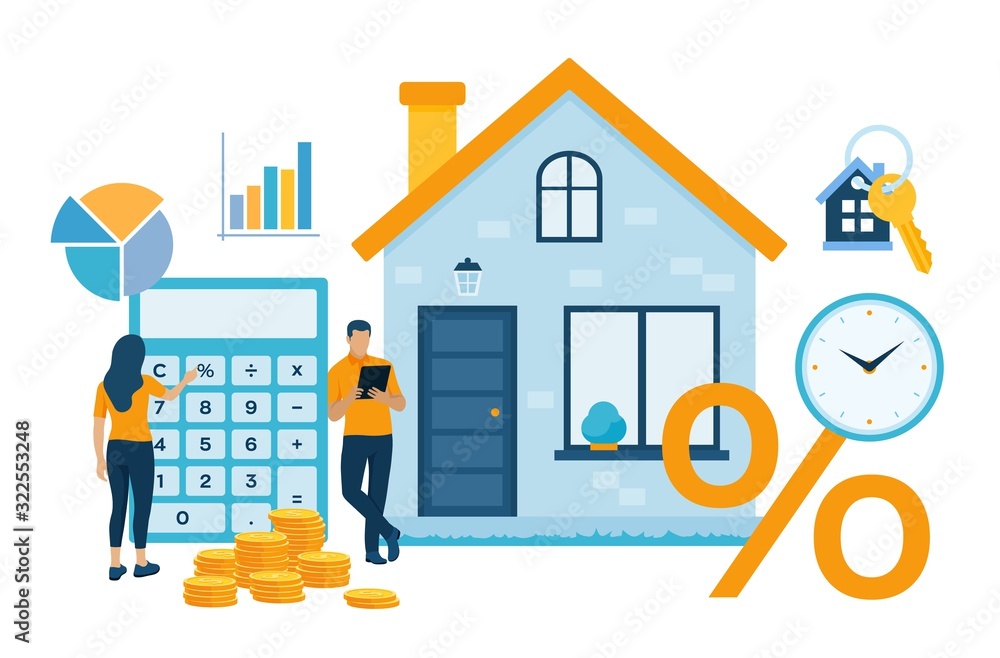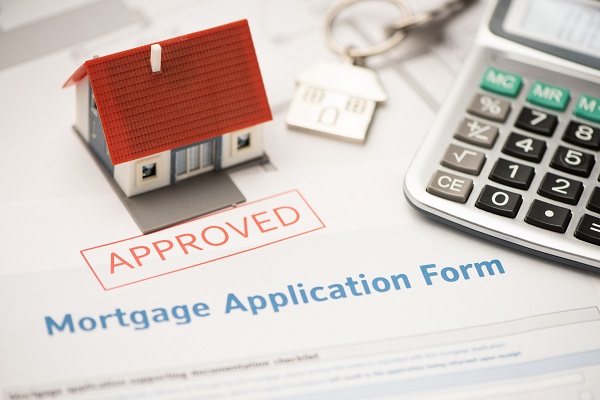
A mortgage is a type of loan that is taken out specifically for the purpose of buying real estate such as a house; This type of loan is secured by the real estate itself, which means that if you are not able to make your payments, the lender can take back the property and sell it to recover his money.
Key Components of a Mortgage
- Principal: the sum of money taken as a loan to buy property.
- Interest: The cost of borrowing principal, usually given in percent per annum.
- Term: The common time period in which loans are paid back is usually 15 to 30 years.
- Monthly Payments: Normal and usual payments done by the borrower, mostly involving both the principal of the loan and the interest. Typically such payments also cover any property taxes and/ or even homeowner’s insurance held in an escrow account.
Types of Insurance and Leading Insurance Companies in the USA
Types of Mortgages
Conventional Loans: Typically, these will need a down payment of at least three percent in addition to a higher credit score since it is not guaranteed or backed up by the federal government.
Government-Backed Loans: These are loans that are designed to help borrowers who have lower credit scores or limited down payment funds such as Federal Housing Administration (FHA), Veterans Affairs (VA), and U.S. Department of Agriculture (USDA) loans.
Jumbo Loans: These are available for people who want to buy expensive homes that are above and beyond what Fannie Mae and Freddie Mac would agree to fund.
Mortgages that have an interest rate that stays the same over time are called fixed-rate mortgages because they help the borrower know what to expect regarding amounts they will pay every month.
Adjustable-rate mortgages (ARMs) refer to loans with regularly revised interest rates, which usually start low but can increase over time.
Construction Loans: For building a new home, often convert to a traditional mortgage once construction is complete.
Interest-Only Mortgages: Allow borrowers to pay only the interest for a set period before principal payments begin.
Piggyback Loans: Involve taking out two loans simultaneously to avoid private mortgage insurance (PMI).
Balloon Mortgages: Require a large payment at the end of the loan term.
Portfolio Loans: Kept by the lender rather than sold to investors, often with more flexible terms.
Renovation Mortgages: Combine the costs of purchasing and renovating a home into one loan.
Second Mortgages: Such as home equity loans and HELOCs, allow borrowing against the equity in your home.
Reverse Mortgages: For homeowners aged 62 and older, allowing them to convert home equity into cash without selling the home.

How Mortgages Work
A mortgage is a type of loan where the lender gives you money to purchase a home or property. You then repay the loan with interest according to specific terms provided by your mortgage lender. Usually, monthly payments will include some interest along with a part of what is owed on your home itself, that is, its principal amount.
Consequently, the more one pays into it over time, especially in relation to other liabilities or debts they owe, that amount decreases as do other expenses associated with owning real estate like insurance coverage costs which typically decrease because borrowers keep their properties up well enough (increase) till they become useless altogether.
This means there are fewer claims against the policy thus lower premiums even if its replacement cost surpasses its real market value at some point before it does become obsolete or worthless completely leading to its bad faith termination although complete loss still happens due out it being worn out through excessive use or sheer.
The Mortgage Process
The home loan process can be tough and involves many steps including pre-application to closing. Below is a detailed breakdown of the main stages needed when applying for a loan against property:
- Pre-Application Steps
Check your credit score: Credit scores influence your eligibility for a mortgage as well as determining the rate you can get on your loan Most mortgage lenders will need you to have a score of at least 620 in order to qualify for a traditional mortgage but if it is an FHA loan, 500 could still do Therefore it is easier to secure better mortgage rates with high credit scores.
Improve Your Financial Profile
It is advisable to improve your financial health before you apply for a mortgage. This comprises repaying debts, abstaining from seeking new credit lines or making sure that your credit history is correct.
Save for a down payment
It was found out that saving for a down payment to buy a home takes time. Various types of loans need different deposit amounts, however, paying a bigger fraction of the whole sum on the mortgage can lower your interest and decrease the demanded monthly sums.
Determine your budget
Determine the volume of income you can afford, given the debts, relevant monthly installments, and other relevant costs. This gives you a genuine idea when shopping for houses.
Research Loan Types
Benefits and requirements for different types of loans widely differ. You should look at options such as conventional loans as well as FHA loans as well as VA loans and then determine whether USDA loans works best for you.
Get Your Documents in Order
Collect important documents including W-2 forms, pay stubs, bank statements and tax returns, which will make the application process proceed faster.
- Pre-Approval
Get pre-approved loan
Pre-approval involves a lender reviewing your financial information to determine how much they are willing to lend you. This step is crucial as it shows sellers you are a serious buyer and can afford the home.
- House hunting
Find a Home
Seek assistance from a real estate broker to locate the house that will meet your terms, preferences as well as budget. Once you have gotten such a house and your offer is accepted, you can start applying for a mortgage.
- Complete the Mortgage Application
Fill Out the Application
You have 3 choices to apply: online, on the phone, or in person. The form asks about your basic contact details like name as well as financial situation such as salary earnings and if there’s any property that you own among other things asked during its completion procedure; along with what kind of loan terms would best suit your needs when filling them out at last step.
Receive Your Loan Estimate
The lender will provide a loan estimate within three business days of application detailing loan terms, interest rate, and expected closing costs. This document lets you know more about financial commitment and compare different lenders’ offers within their deadline of three days after applying.
- Underwriting
Shift to Underwriting
The lender may request the loan terms approval for the underwriting process of the loan. This involves funders verifying your financial details, going through your credit report, and determining if you can repay. More papers could be required or explanations sought in some areas.
Respond to Underwriting Requests
Please make sure to respond to any inquiries, from the underwriter and submit the documents to prevent any potential delays. Additionally, the underwriter will arrange for a home appraisal to confirm that the property’s worth matches the loan amount.
- Receive an Official Decision
Approval or Denial
Upon the completion of the underwriting process, the lender will give you an official answer. In case your credit request is approved, you’ll collaborate with the vendor toward setting a closing date. However, on denial of credit, the lender must give reasons for refusal and in case important you may need to rectify the issues before reapplying.

- Closing
Prepare for Closing
Take a look at the closing disclosure that explains the ultimate terms regarding loan repayment plus all fees; it should not have any difference from what was in a statement previously discussed. Besides, plan to see what would be the last house inspection before we finally come together at the time of concluding our transactions in an appropriate place such as an office. Review the final accounts showing loan terms and costs.
Closing Day
You will sign a bunch of papers during the closing day such as the mortgage agreement and deed. The moment everything has been signed, and your money is now in our bank account, this will ensure that you have the keys to your new house in no time; so congratulations in advance for becoming an official homeowner.
Tips
If you do not have a traditional job with regular wages, savings or a checking account then you will most likely not qualify for an FHA loan. It is advised that those who fall into this guideline should be prepared with more evidence apart from employment such as P&Ls in cases where income documentation cannot verify their financial ability alone.” approximately one-fourth of all home purchase transactions are today financed by federally insured mortgages like those overseen by the FHA.
All You Need To Know About Mortgage Calculator
A Mortgage calculator/ home purchase inquiry framework is designed to help potential buyers and property owners calculate their usual monthly payment amounts for properties and make sense of all the varying financial outcomes tied to a host of different mortgage occasions. In this presentation some certain unique attributes and operations have been embodied by different online mortgage calculators:
Key Features of Mortgage Calculators
- Monthly Payment Estimation
- Principal and Interest: The core components of the monthly mortgage payment.
- Taxes and Insurance: Property taxes and homeowners insurance can be included to provide a more comprehensive estimate.
- Private Mortgage Insurance (PMI): If the down payment is less than 20%, PMI is typically required and can be factored into the monthly payment.
Input Variables:
Home Price: The purchase price or current value of the home.
Down Payment: The amount of money paid upfront, either as a dollar amount or a percentage of the home price.
Loan Term: The length of the mortgage, commonly 30, 20, 15, or 10 years.
Interest Rate: The annual percentage rate (APR) applied to the loan.
ZIP Code: Used to estimate local property taxes and insurance rates.
Advanced Features
Amortization Schedule/ Payment Schedule: An in-depth presentation containing all the payments made while the loan is serviced; it reveals the proportions attributed to the principal as well as the interest.
Further/ Extra Payments: Opportunities for making extra regular installments in order to decrease the principal sum faster, and also shorten the terms taken in servicing this loan while at the same time lowering the total interest paid. The result is flexibility which it can bring about either higher or lower outgoings according to your needs because you’ll be paying off less or more with time due to these adjustments made.
Comparison Of Loan Scenarios: Ability to compare varied scenarios that differ with respect to term length as under different terms and rates those values have on monthly repayments and total interests payable.
Affordability Calculations:
Debt-to-Income Ratio: It is used to help a person ascertain the exact proportionate amount of his income that should be put into housing expenses, usually following the 28/36 guideline, that is, 28% maximum for housing costs only, while total debt must not exceed 36%.
Home Affordability: These are tools used to estimate how much house you can afford based on your income, debts, and savings.
How to Use a Mortgage Calculator
- Input the price of the home you are buying or the current value if refinancing.
- Specify the amount you plan to put down or the equity you have.
- Choose the length of the mortgage.
- Enter the expected or current interest rate.
- Provide your ZIP code to estimate local taxes and insurance.
- Click update to see the estimated monthly payment and review the breakdown of costs.
Benefits of Using a Mortgage Calculator
Budgeting: Helps determine if you are spending more than you can afford on housing.
Loan Comparison: Allows you to compare different loan terms and interest rates.
Down Payment Planning: Assists in deciding how much to put down and the impact on monthly payments.
Early Payoff Strategies: Shows how extra payments can reduce the loan term and save on interest.
PMI Removal: This helps determine when you can request the removal of PMI by reaching 20% equity.
Using a mortgage calculator can provide valuable insights and help you make informed decisions when buying a home or refinancing your mortgage.